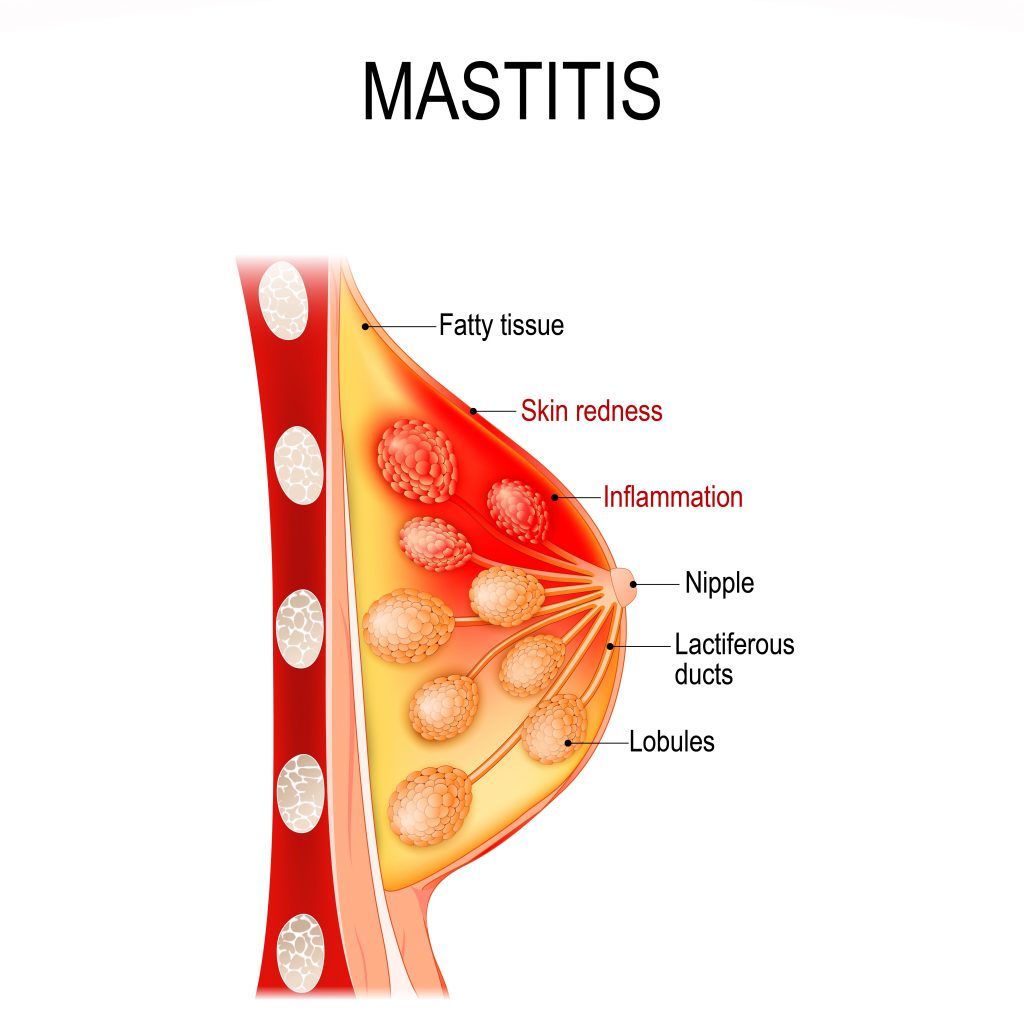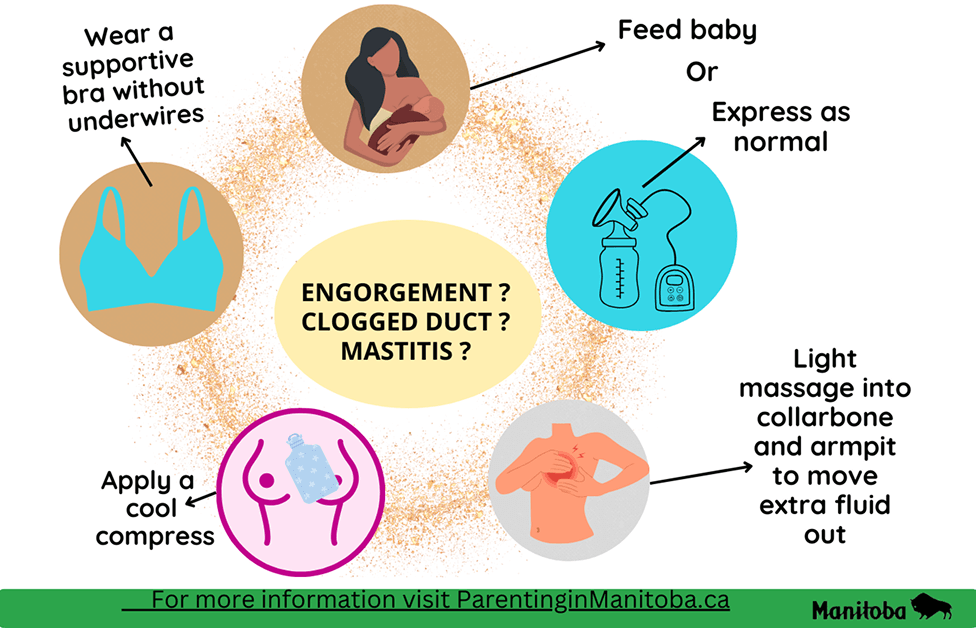Mastitis is painful inflammation in the breast tissue that can affect parents who breastfeed/chestfeed or exclusively pump. Mastitis can cause pain, swelling, warmth and redness on your breast/chest. It can also make you feel run down and tired. Parents can continue to breastfeed/chestfeed their babies while mastitis is healing.
What are the symptoms of mastitis?
- red, warm or swollen breast/chest
- tender lump in your breast/chest
- nipple bleb or milk blister
- flu-like symptoms such as fever (greater than 38 C), chills, body aches

What causes mastitis?
Mastitis is most commonly caused by overactive milk production (hyperlactation) through over-pumping or medications used to increase breastmilk/chestmilk supply. Oversupply of milk causes the breast tissue to put pressure on the milk ducts, and may cause plugged ducts, engorgement and inflammation. Skipped feeds, poor latch, a poorly fitting breast pump/chest pump flange or recent use of antibiotics can also lead to mastitis. In some cases, mastitis inflammation can lead to infection (bacterial mastitis) or an abscess (a collection of fluid and pus under the skin).
What can I do to ease mastitis?
What to do
- Feed your baby or express breastmilk/chestmilk as normal.
- Feed your baby at the breast/chest in your usual position.
- Apply a cool compress.
- Do gentle lymphatic massage. Watch this video to learn how.
- Take ibuprofen (Advil®, Motrin®) or naproxen (Aleve®) as needed.
- Wear a supportive and comfortable bra.
- Ask your health-care provider for a steroid cream for nipple blebs.
What to avoid
- Extra feeds or pumping to “empty the breast/chest” as this can increase swelling and inflammation.
- Feeding positions that are not recommended such as dangle feeding.
- Applying heat.
- Pushing on the lump or using vibration/electric toothbrush.
- Using saltwater (saline) soaks, castor oil or other topical products.
- Wearing tight fitting bras or bras with underwires.
- Picking the nipple bleb.
If you were binding prior to pregnancy, you may already have stopped due to increasing chest sensitivity while pregnant. While you are breastfeeding/chestfeeding, wearing something less restrictive with more flexibility than a chest binder can be helpful in milk production and lower the risk for infections like mastitis.
Parent Tips
- Ask your family and friends for help so you can rest.
- If the recommendations above don’t improve your mastitis and you develop flu-like symptoms that last more than 24 hours, call your health-care provider.
“I always heard you are supposed to empty your breasts/chest to help with mastitis…have things changed?”
The new recommendation is: If you are separated from your baby or are exclusively pumping, aim to produce only the amount of milk your baby needs and not more. If you need help breastfeeding/chestfeeding your baby, reach out to your public health nurse, knowledge keeper, midwife or health-care provider.
In the past, it was thought that “emptying your breasts/chest” more often would treat the symptoms of oversupply. New research (as of 2022) shows that this actually makes engorgement worse. Doing extra feeds or pumping will only lead to more milk production and more inflammation.
How can I prevent mastitis?
- Breastfeed/chestfeed your baby based on their hunger cues. Make sure your baby has a good latch and position.
- Get help early if you have concerns about breastfeeding/chestfeeding. Check out our Breastfeeding Resources – Parenting in Manitoba page.
- Pump breastmilk/chest milk only if you have to be away from your baby or you plan to give a bottle instead of feeding at the breast/chest.
- If you are exclusively pumping, pump only the amount of milk your baby needs and not more.
- When using a breast pump/chest pump, use the most comfortable pressure setting and pump for 10 to 15 minutes. Make sure your breast pump/chest pump flange is the right size for you.
- Wear a good-fitting bra without underwires. It shouldn’t be tight or restrictive.
Why do my breasts/chest feel like they are going to explode?
- In the early days of breastfeeding/chestfeeding, it is common for breasts/chest to swell up with milk. They may feel full, heavy and sore. This is called engorgement. You may mistake it for mastitis.
- Engorgement can also happen later on if feedings are missed.
- The good news is, engorgement generally only lasts a couple of days.


